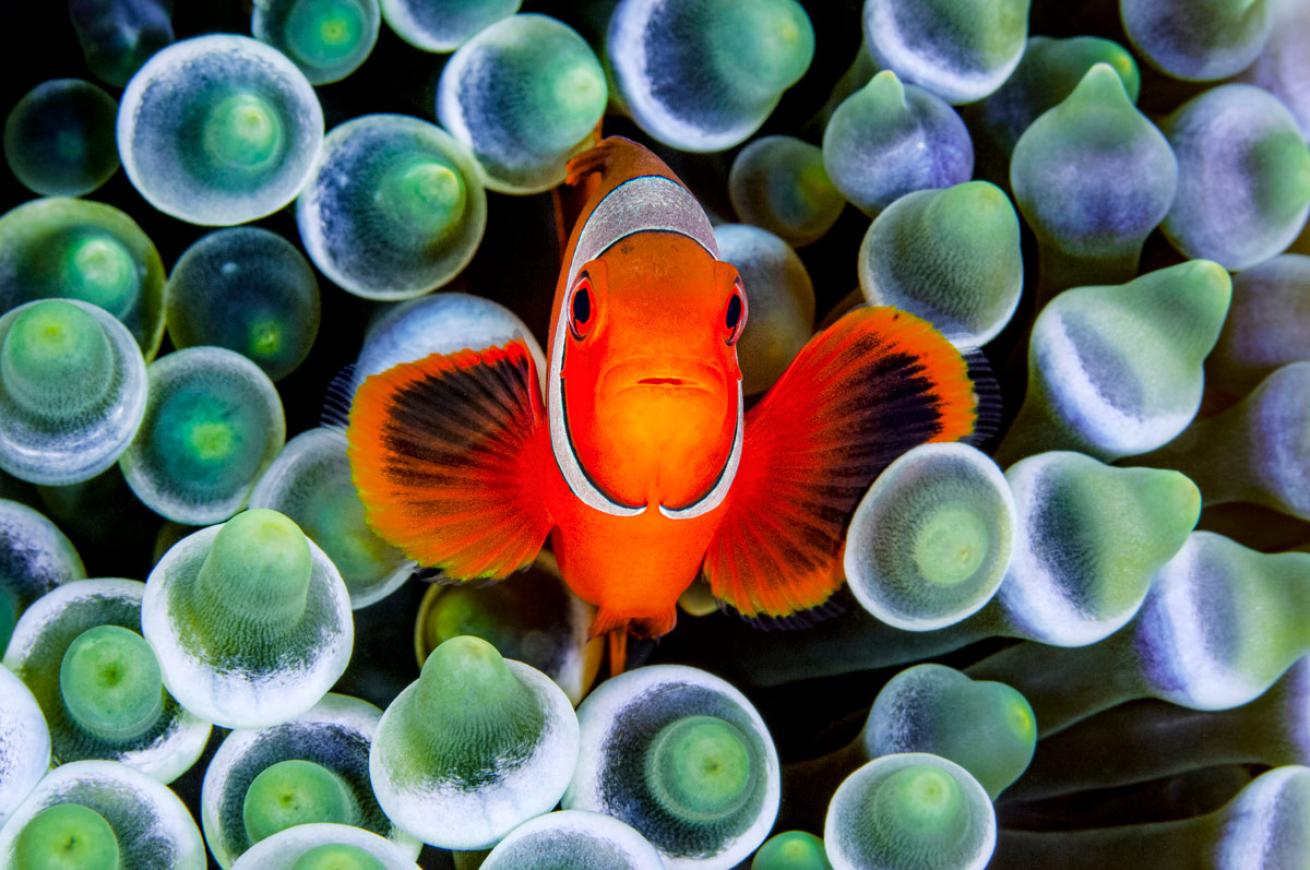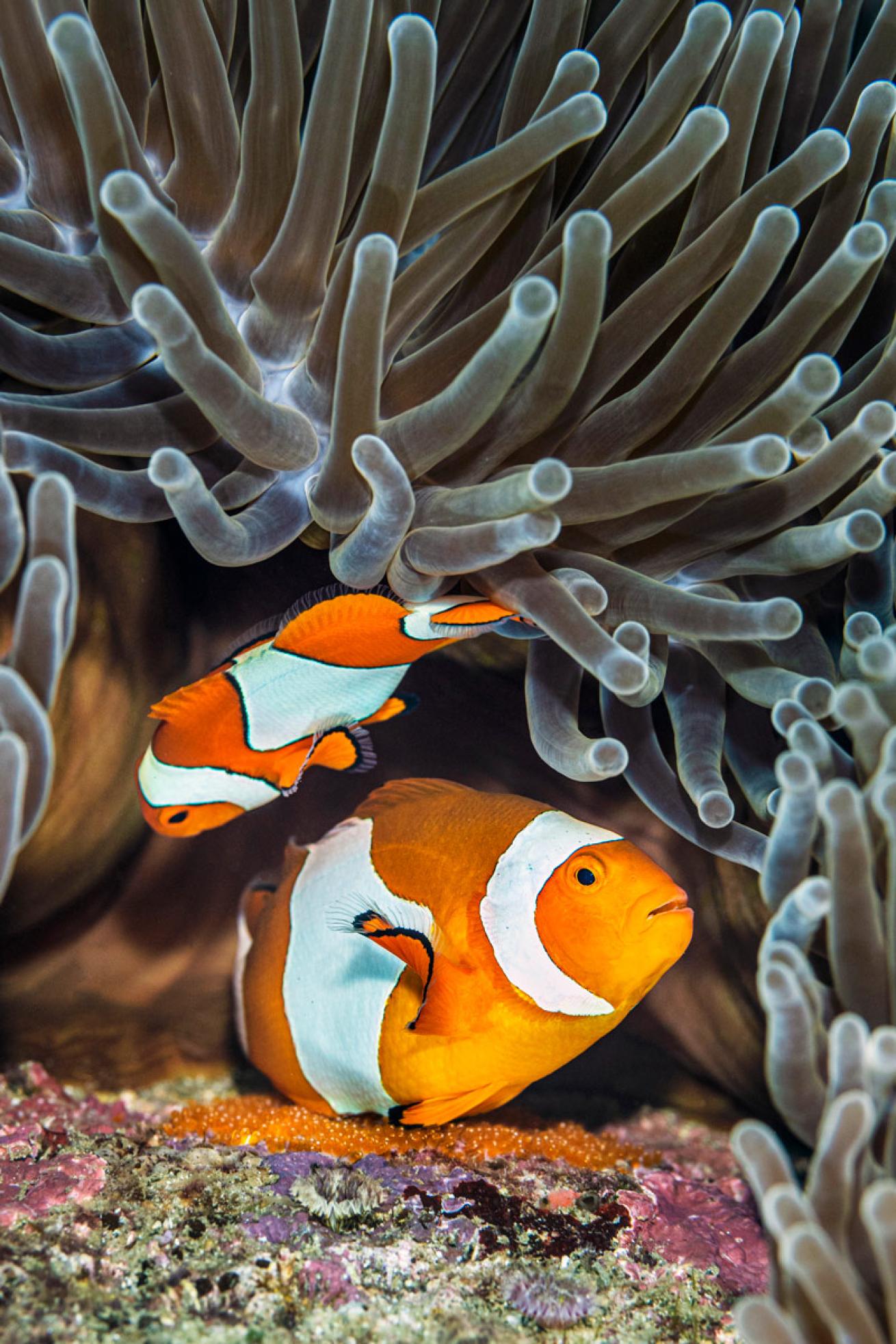How to Take an Uncommon Photo of the Common Clownfish

Alex MustardThis standard shot is enhanced by the subjects: a pretty male spinecheek anemonefish and a bubble-tip anemone.
I am always impressed with photo contest winners that take a common subject and elevate it using talent, innovation and knowledge. Clownfish are cute, recognizable and one of the most popular photo subjects underwater. You can absolutely win a contest with one as your subject, if you're able to create a standout photo!
TIP 1
Clowning Around
Anemonefish are easy to find, but they never stay still long enough to compose that perfect shot. Dedicate some time to working with them. Critical to memorable anemonefish shots is not just the fish, but the background as well. Anemonefish live in many kinds of anemones, and you want the most attractive for your shots. When sea temperatures become too warm, reef anemones will bleach by expelling their symbiotic algae and turning white. While this isn’t good news for the anemone, bleached anemones are eye-catching, and these shots also contain a valuable environmental message.
You can make your work stand out further with field craft—a term used to describe everything that goes into producing stunners that isn’t camera related. Field craft includes factors such as how to find the subjects, the time of day they are most likely to give good pictures, how to approach a subject, and a multitude of other subject-specific tips and tricks. Knowing these will help you win contests.
TIP 2
Spots and Stripes
For winning shots, choose photogenic and cooperative fish from the most attractive species. With darker anemonefish species it is easy for the eye to get lost against the body color, so target lighter individuals. In all portraits, good eye contact is essential.

Alex MustardThe larger female clownfish lays orange eggs, while a male waits to fertilize.
Anemonefish and their host anemones are covered in mucous. Use two strobes in 10 and 2 o’clock positions for soft, even illumination. Alternatively, hard light from a single strobe aimed in from the side will bring out the texture of the tentacles and can be a good solution for unattractive anemones. Backlighting can be spectacular, but requires an anemone in an exposed, prominent position to give space to position lighting. The warm colors of anemonefish look great against blue water, but the longer exposures required to capture the blue also make the fish’s white bands overexpose and blur with ghosting. Use rear- or second-curtain flash sync to ensure that any blurring goes backward from the band, rather than forward and across the eye. Certainly, for macro shots, anemonefish look best illuminated only with strobe light to show off the richest colors, and therefore select a low ISO, closed aperture and fast shutter speed.
The last bit of stardust you can sprinkle on your images comes from the natural behaviors of the fish themselves. The secret to capturing these behaviors is observation. When you spot a suitable situation, keep your distance and watch what’s happening before rushing in for the shot. Anemonefish spawn by laying eggs on the reef. It is common to see anemonefish eggs laid on the rocks beneath the skirts of the anemones, but mating shots are rare. The eggs themselves are good subjects. They usually take about a week to hatch, starting off brightly colored and becoming more silvery as the eyes develop. Late-stage eggs with big eyes are very photogenic. After years without mating photos, I finally figured out the technique. Most damselfish (anemonefish are in the same family) are exhibitionists, rarely put off when observed spawning.
Anemonefish are shy, as they must leave the protection of the tentacles to spawn. This means as soon as they sense a threat (like an approaching diver) they stop spawning and retreat until the risk has passed. So now, when I see fresh, brightly colored eggs, I back away and watch from a distance to see if they are still spawning.










